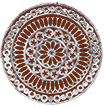Edinburgh 2021
European Architectural History Network Meeting
Edinburgh, 2-5 June 2021
SESSION: Rethinking Architecture for Friars: Process and Spatial Solutions in the Medieval and Early Modern Europe, 1200 - 1500
The convents of the mendicant friars played a central role in the construction of the cities of Late Middle age and Early Modern Europe (1200-1500). The international character of the orders and mobility of the friars meant that new trends, styles and social practices spread rapidly throughout Europe: friars were as much “missionaries” of social practices as they were of architectural or decorative ones. This panel poses the question of how to situate Mendicant architecture as a result of the product of spiritual, social and economic policies negotiated between convents and citizenship, between laity and religious.
This session (born from the international project “The medieval city, the city of the friars”, 2018 AISU Networking Call for Proposal and Medieval Heritage Platform, Politecnico di Torino DIST) focuses on the mendicant construction strategies. Architecture extends into the city and permeates the urban constructions. This strongly determines the conception of the construction of convents as result of the interaction of several factors related to the will to self-representation, the progressive affirmation of order and the utopian ideal of poverty, always conditioned by the search for economic support and by the local conjunctures. Conventual buildings as a result of a long process of becoming, as part of an organic and additive approach to architecture. The architecture of the new orders was by definition work in progress molded to their changing institutional character and the conventualization of their settlements. “Friars used a combination of all these possibilities: their architecture had an amoeba-like mobility that responded to requests by donors for altars and chapels as well as to broader changes in social, economic and spiritual circumstances” (C. Bruzelius, Preaching, Building, 2014).
